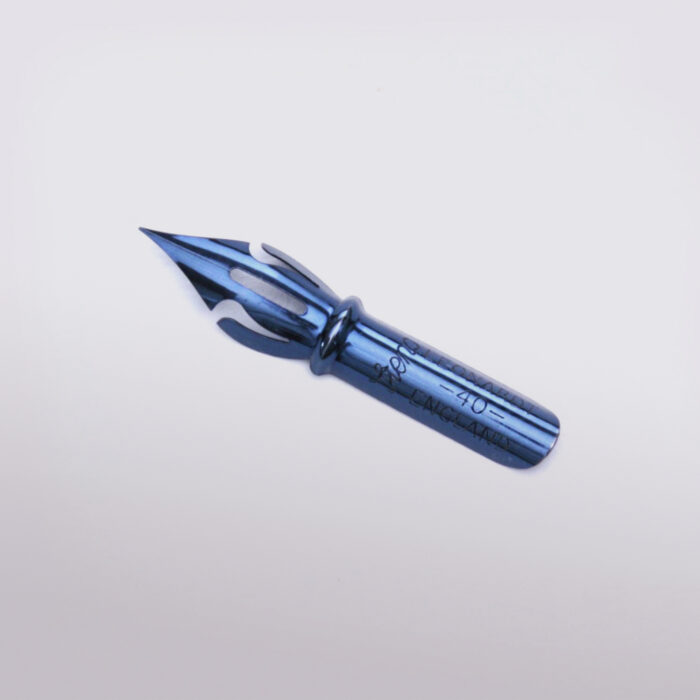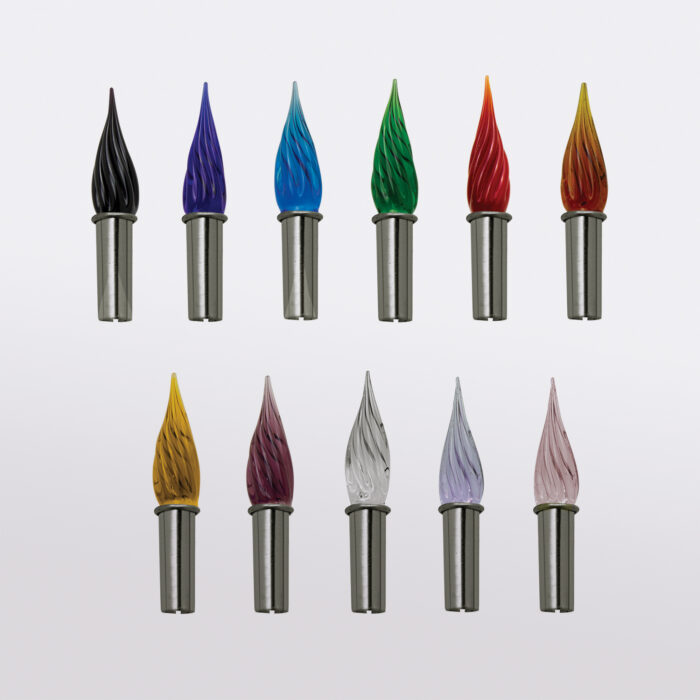Bortoletti Fonderia Artistica
Collection of steel and Murano glass immersion calligraphy nibs. Several variants of calligraphy nibs were patented, suitable for various calligraphic writing patterns, from cursive calligraphy to Gothic calligraphy and English cursive. The shape of calligraphy nibs derives from the way quill pens were anciently worked. Two basic cuts still characterize its structure today, a vertical one to allow for ink reserve and a horizontal one that determines the shape of the tip.
The squaring of the calligraphic nib is of paramount importance because it is what gives very different characteristics to the writing strokes. Truncated-tip calligraphy nibs are used for many types of writing particularly Gothic calligraphy.
Flexible-tip calligraphy nibs are used especially for English writing, and depending on the pressure you apply to the nib the wider the writing stroke. When first used, the calligraphy nib needs to be heated with a flame to remove the protective varnish.
Murano glass calligraphy nibs are wonderful writing instruments with the ability to be adapted to all Bortoletti pens. Italic Italic, Mono-line Italic, and American Italic are some examples of calligraphic styles perfect for this instrument. The Murano glass nib was produced as early as the 18th century in Venice, on the island of Murano, master glassmakers made true works of art that were very much in vogue at the time even in the United States.

